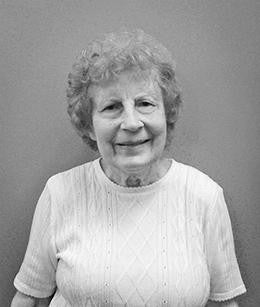Director’s Letter, February 2016
Updated Jul 20, 2022
After my years of study and work in Europe, I came to America in 2004 eager to immerse myself in a new culture, which I associated with an open mind, freedom of expression, and the idea that if one works hard opportunities present themselves. Looking back, I can safely say that America has been very generous to me: it gave me a family, a flexible way of being, professional opportunities, and many other treasures. Furthermore, while in this country I have learned many inspiring lessons, but the one that has struck me the most is that American society is naturally philanthropic. I have witnessed how those who have been successful in their lives understand their civic responsibility to give back to the community in which they flourished. Giving back means helping charitable institutions, bringing people together, fighting inequality, and many other actions focused on creating a better and just society. The DIA, in this sense, exists as a result of the generosity and vision of many individuals, stands as a monument of philanthropy, and aims to be an agent of change in our community.
Philanthropy is not only providing tangible gifts but is also the giving of time, love, and support. Sometimes all these types of charity occur at once. I like to define our extraordinary volunteers as the DIA's "intangible gold." Their work is a pure act of generosity, an example of civic commitment. Last month, one of our very own such volunteers, Elizabeth Verdow (left), was celebrated across the country. She was an art teacher in the Detroit Public School system and had served as a volunteer in the DIA shop for nineteen years. Elizabeth passed away in 2014, leaving the DIA $1.71 million.
When we announced her gift, many of her former students posted comments on our Facebook page attesting to Elizabeth's extraordinary personality: "She embraced everyone's unique creativity. What a woman. What a legacy." The social feedback excitement was remarkable, and I imagined her dedicated perseverance in saving and the extraordinary act of kindness it was to donate this lifelong effort, in one moment, to the DIA. I was also amazed by her confidence in supporting an institution that she had witnessed navigate some somber and uncertain times. I wonder what would have happened with her bequest if the DIA had been forced to sell its collection as a result of the city's bankruptcy.

Elizabeth devoted her gift to strengthen the operating endowment and to purchase contemporary paintings and sculpture. Although she did not request recognition for her contribution, the DIA has established the Elizabeth Verdow Contemporary Art Acquisition Fund, which will appear as a credit line in all the labels that accompany newly acquired works. This will ensure she is perpetually remembered, and the new art in the galleries will beautifully crown her extraordinary gift.
This philanthropic act is tremendously inspiring and has brought another dimension to that striking lesson I learned when I first came to America. We do not need to be millionaires to give back to the community. Each of us can make a difference. Elizabeth proved this with "intangible" and "tangible" gold. We all wish she was still with us so we could personally thank her.
After my years of study and work in Europe, I came to America in 2004 eager to immerse myself in a new culture, which I associated with an open mind, freedom of expression, and the idea that if one works hard opportunities present themselves. Looking back, I can safely say that America has been very generous to me: it gave me a family, a flexible way of being, professional opportunities, and many other treasures. Furthermore, while in this country I have learned many inspiring lessons, but the one that has struck me the most is that American society is naturally philanthropic. I have witnessed how those who have been successful in their lives understand their civic responsibility to give back to the community in which they flourished. Giving back means helping charitable institutions, bringing people together, fighting inequality, and many other actions focused on creating a better and just society. The DIA, in this sense, exists as a result of the generosity and vision of many individuals, stands as a monument of philanthropy, and aims to be an agent of change in our community.
Philanthropy is not only providing tangible gifts but is also the giving of time, love, and support. Sometimes all these types of charity occur at once. I like to define our extraordinary volunteers as the DIA's "intangible gold." Their work is a pure act of generosity, an example of civic commitment. Last month, one of our very own such volunteers, Elizabeth Verdow (left), was celebrated across the country. She was an art teacher in the Detroit Public School system and had served as a volunteer in the DIA shop for nineteen years. Elizabeth passed away in 2014, leaving the DIA $1.71 million.
When we announced her gift, many of her former students posted comments on our Facebook page attesting to Elizabeth's extraordinary personality: "She embraced everyone's unique creativity. What a woman. What a legacy." The social feedback excitement was remarkable, and I imagined her dedicated perseverance in saving and the extraordinary act of kindness it was to donate this lifelong effort, in one moment, to the DIA. I was also amazed by her confidence in supporting an institution that she had witnessed navigate some somber and uncertain times. I wonder what would have happened with her bequest if the DIA had been forced to sell its collection as a result of the city's bankruptcy.

Elizabeth devoted her gift to strengthen the operating endowment and to purchase contemporary paintings and sculpture. Although she did not request recognition for her contribution, the DIA has established the Elizabeth Verdow Contemporary Art Acquisition Fund, which will appear as a credit line in all the labels that accompany newly acquired works. This will ensure she is perpetually remembered, and the new art in the galleries will beautifully crown her extraordinary gift.
This philanthropic act is tremendously inspiring and has brought another dimension to that striking lesson I learned when I first came to America. We do not need to be millionaires to give back to the community. Each of us can make a difference. Elizabeth proved this with "intangible" and "tangible" gold. We all wish she was still with us so we could personally thank her.

